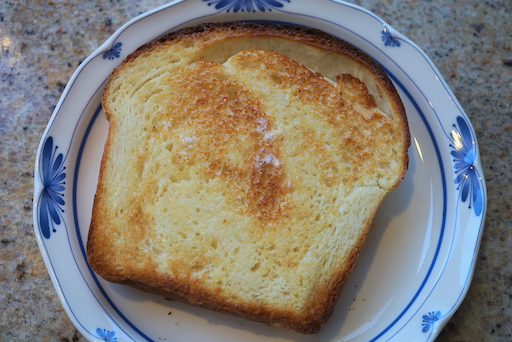We like to roast pork in our Weber but because of Covid, the cuts we usually use for roasting are not always available and we have had to make do with whatever we can get. Case-in-point, we recently got a bone-in shoulder pork roast. This cut was very large. In addition, it contained a portion of the scapula bone which I removed requiring some further “at home” butchery to get the various sizes and portions that we wanted. In this case I removed the bone and divided the roast into three segments. The first segment was the meat around where the bone was removed. I cut it into small chunks for stew or curry. The remaining two segments consisted of a smaller portion of roast which I used for “ni-buta” 煮豚 or simmered pork and a larger portion of roast which I barbecued in our Weber.
I commissioned my wife to come up with a dish using the small chunks and suggested a curry. This time, my wife wanted to make a new curry she had not tried before. She chose one from Madhur Jaffrey’s cookbook “Indian Cooking. In addition to using quite a few spices (#1 & #2 below), it also includes pulverized almonds which is something we have not used before. The resulting curry is shown in the picture below. It was a lunch one day. I served the curry over rice with tomato (Skinned Campari tomato), blanched sugar snaps and broccoli which I warmed up in the curry while the curry was being heated.
I also served Japanese pickles which traditionally accompany Japanese curry. The red on the left is “Fukushin-zuke” 福神漬け (people from Hokkaido call it “Fuku
shin-zuke”a but the rest of Japan will call in “
Fukujin-zuke” (a mixture of daikon, lotus root, egg plant and cucumber, soy sauce flavored) and the white objects on the right are “rakkyo” らっきょう (pickled small onions).
Ingredients:
2 garlic cloves
1 inch sized ginger cube coarsely chopped
5 Tbs. slivered almonds, roasted
3/4 to 1 cup of chicken stock
2 lbs. of pork shoulder cubes
1/2 tsp. cardamom
1 tsp. cinnamon
1/4 tsp. cloves
2 medium onions finely chopped
1 tsp. ground coriander
2 tsp. ground cumin
1/4 tsp. cayenne pepper
1 1/4 tsp. salt
1/4 tsp. garam masala
Directions:
Put the garlic, ginger, almonds and 6 Tbs. chicken stock in a blender (we used an immersion blender) and blend until you have a paste (#3).
Add several tablespoons of peanut oil into wide frying pan. Add the cardamom, cinnamon and cloves and cook until they “bloom” becoming fragrant. Put in the onions and cook until lightly browned (#4). Put in the almond paste as well as the coriander, cumin and cayenne pepper (#5). Stir until it browns slightly. Add the meat the salt as well the chicken stock (#6). Cover and cook on simmer for several hours until the meat gets tender. Add the garam masala before serving.
Just a Note: The meat did not get tender in the sauce even after several hours so I removed it and put it in a sauce pan covering it with chicken stock. I simmered it that way for about an hour. It got nicely tender and made additional sauce in the chicken stock. I added the meat back and sauce into the curry and it was much better.
This was very good. We've never had anything like this before. It had plenty of depth of flavor but was not too (spicy) hot. The almonds gave it a creamy texture and added a note of nuttiness that was very nice. The additional veggies I put in as it was being heated up added some bright notes of freshness as well as additional flavors. It made a great lunch.
























